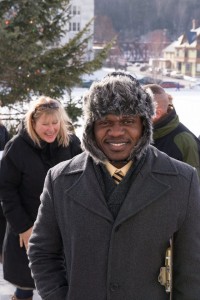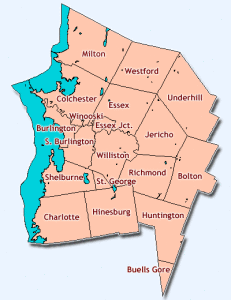
Even as Governors of some states are declaring their unfounded and fearful opposition to the resettlement of refugees from Syria in their states, Vermont continues to be welcoming, not only to Syrian refugees but for many others fleeing war, persecution and political or religious oppression. That is as it should be, not only for humanitarian reasons but because it is good for the nation, the states, communities and the world.
For more than twenty five years, the United States has offered assistance to refugees through the U.S office of refugee resettlement. Burlington, Vermont is one of the designated refugee resettlement communities. In recent years the number of refugees and immigrants coming from Africa, East and Central Asia to Vermont has significantly increased. Every year the U.S. Congress decides the number of refugees that will be admitted into the U.S. during the fiscal year. In 2014, the U.S government admitted a total of 58,238 refugees into the U.S and approximately 50% of the 58,238 or 29,219 admitted to the U.S fell below 20 years of age.
Process
Once refugees have been approved for admission to the U.S., refugee resettlement agencies (Vermont Refugee Resettlement Program (VRRP) for the state of Vermont) initially helps to resettle the new refugees including securing housing for them, and providing basic assistance with community orientation, medical screening, employment search services, English language instruction for those coming from non-English speaking countries as well as school orientation to the New Americans.
 Life has not been easy for these New Americans. The International Rescue Committee explains that numbers of refugee families have survived traumatic life events including years of political conflict, exposure to war-related violence and deprivation, and chaos in refugee camps. Potential risk factors encountered by refugee children and youth include separation from family members, lack of access to education and health care, recruitment into armed forces, sexual exploitation, the loss of home, and exposure to war-related trauma.
Life has not been easy for these New Americans. The International Rescue Committee explains that numbers of refugee families have survived traumatic life events including years of political conflict, exposure to war-related violence and deprivation, and chaos in refugee camps. Potential risk factors encountered by refugee children and youth include separation from family members, lack of access to education and health care, recruitment into armed forces, sexual exploitation, the loss of home, and exposure to war-related trauma.
Additionally, refugee youth in the U.S. face further challenges such as new language acquisition, social isolation and alienation, social adjustment with peers, negative peer pressure, grief and bereavement, discrimination, cultural misunderstanding, and adjustment to a new educational system. According to the International Rescue Committee, “Associated psychosocial stress can hinder refugee children’s ability to learn English, perform adequately in school, and develop peer support networks”. Because of these challenges faced by New Americans, our efforts to create welcoming communities are all the more important.
Economic and cultural benefits to our state
Despite the challenges that New Americans have to overcome, they have proven to be outstanding achievers in educational advancement and demonstrate a strong work ethic. They are highly motivated to advance themselves and to contribute to their new communities in a positive way. In other words they are a plus to our communities not a negative.
 In Vermont we should keep in mind that we are losing population, especially younger people; the state has a declining population which is growing older and at the same time it has the 4th lowest unemployment rate in the country at 3.6 percent. So, many local companies are tapping into the refugee labor pool. Refugees contribute much to the workforce. At the same time, although this is foremost a humanitarian gesture, admitting more refugees can also be a boon for businesses and local economies, particularly in smaller states with labor shortages. There is an interesting recent article to read from PRI about “Vermont businesses” that focuses on a Burlington industry example in particular. New Americans are also market consumers for our local businesses and tax payers – both income taxes and sales taxes – as well as property tax payers as they begin to own real property.
In Vermont we should keep in mind that we are losing population, especially younger people; the state has a declining population which is growing older and at the same time it has the 4th lowest unemployment rate in the country at 3.6 percent. So, many local companies are tapping into the refugee labor pool. Refugees contribute much to the workforce. At the same time, although this is foremost a humanitarian gesture, admitting more refugees can also be a boon for businesses and local economies, particularly in smaller states with labor shortages. There is an interesting recent article to read from PRI about “Vermont businesses” that focuses on a Burlington industry example in particular. New Americans are also market consumers for our local businesses and tax payers – both income taxes and sales taxes – as well as property tax payers as they begin to own real property.
Given both the benefits to our communities and to the refugees themselves of having open welcoming and inclusive communities, we need to continue to welcome and embrace the diversity and economic dynamism that New Americans bring for the good of all concerned.
